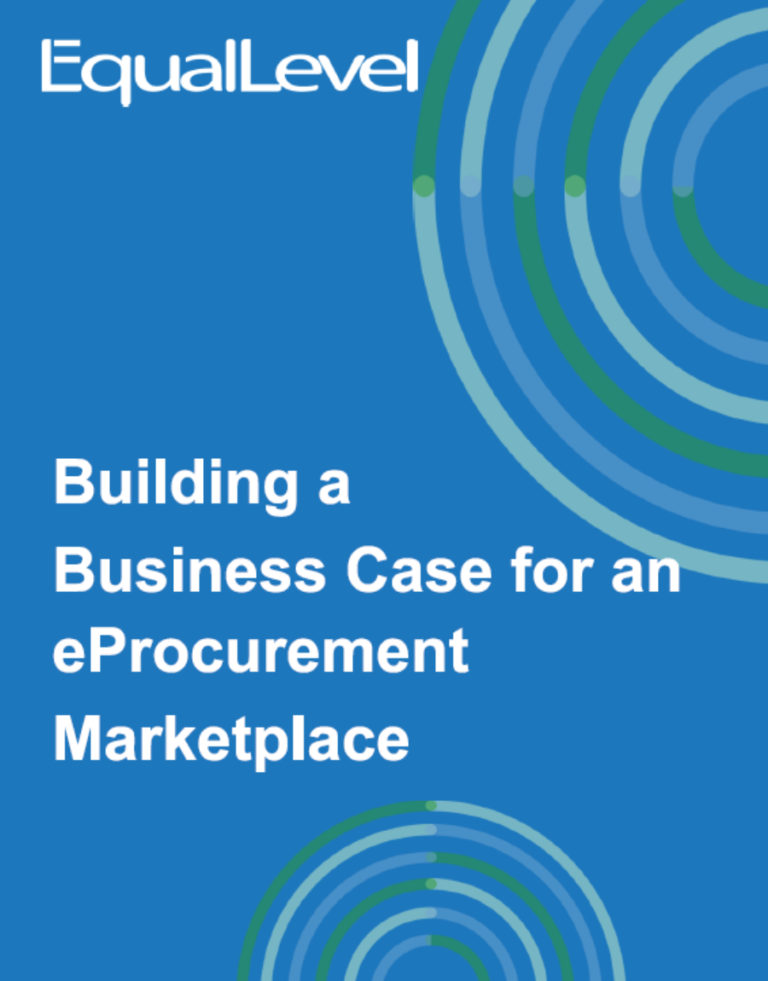
EqualLevel’s April Marzzacco knows how important it is to present a well-researched and evidence-backed business case when trying to garner approval to drive efficiency and process improvement in a difficult fiscal climate. Prior to joining EqualLevel, she was an entrepreneur and public sector change agent. In this article, Marzzacco outlines the five key elements she recommends you include to create a business case that maximizes your chances for approval.
Purchasing departments across the country are reporting that they are busier than ever with staff shortages, budget cuts, and ongoing supply chain issues. It is not uncommon for agencies that are still limping along with manual entry to be struggling with the volume of purchase orders coming in and high bookkeeper burnout, while also dealing with maverick spend and non-compliant purchasing.
Whether it is these challenges or others that your department is facing, you may believe now is the time to find a solution that will streamline your purchasing process. Based on your research, and recommendations from other agencies, you may have already decided that implementing an eProcurement marketplace is just that solution.
What is a business case?
Presenting a business case is considered the best way to introduce new initiatives to stakeholders. According to projectmanager.com, a business case is a presentation or document that outlines why a project should be executed, and how its benefits outweigh its costs. The goal of a business case is to convince stakeholders of a project’s value, and that the project you are proposing is a sound investment in which they should direct resources. To build a business case for EqualLevel’s eProcurement system, it is important to provide higher-ups with the information they need to understand both the importance of automating, and the return on investment (ROI).
There are many recommended formats for structuring a business case but in general, it should cover the following five elements:
1. The Challenge
In this first section of your business case, you will outline your current process and the reasons why you believe change is necessary. Challenges you might include:
- Manual entry is slowing down the purchase process
- Manual entry causes more errors
- Bookkeeper burnout
- Maverick spend
- Non-compliant purchasing
You should also include the costs associated with your current system in this part of the business case. These could include any costs related to software, the wages paid to employees who manually enter requisitions and purchase orders, as well as the costs associated with continuing to overpay for goods and services.
TIP: When tallying your current costs, if there is information you are not able to find within your organization, industry benchmarks should suffice.
2. The Solution
In this section of your business case, you will present the solution you are recommending, namely, implementing EqualLevel’s software. This will be where you define what an eProcurement system is. Here is an example: “An eProcurement marketplace is integrated with an organization’s ERP system and offers a single, seamless platform that facilitates all of the processes associated with the shop-order-pay transaction. EqualLevel’s dashboard offers a consumer shopping-like experience where users can shop from all of their organization’s approved suppliers in one place. With this set-up, best value options are displayed and organizations report higher user acceptance and greater compliance.”
This is also the part of the business case where you will present how the software works. The best way to explain the functionality and capabilities of EqualLevel’s AI-powered software is to see it in use. EqualLevel creates customized software demos so you, and your organization’s stakeholders, can see the marketplace in action. The demos allow interested parties to get hands-on experience with the system and it lets them see how EqualLevel’s Savings Advisor (ELSA) locates savings in real-time, while a user shops.
3. The Cost
EqualLevel is able to provide a worksheet to quickly calculate the results you can reasonably expect to achieve through deployment of its eProcurement marketplace. The worksheet divides savings into two areas: “soft” savings, where process costs will be reduced (the resources may be reallocated to other, more value-added, activities), and “hard” savings, where costs will actually be reduced (using ELSA). Once you have calculated your expected savings, you can subtract that from the cost of the marketplace software to determine your ROI.
4. The Benefits
The next section in a business case should include the benefits your organization can anticipate from implementing your initiative. In this case the benefits of an eProcurement marketplace include:
- Efficiency: Automating leads to faster cycle times and improved productivity. The elimination of paper and manual steps frees up time for employees to focus on more critical initiatives.
- Cost Savings: With all approved vendors housed in one centralized location, best value products can be easily identified.
- Compliance: By automating the three-bid process and showing only contracted vendors, an eProcurement marketplace helps organizations comply with state and federal regulations.
- Transparency: Robust reporting capabilities help ensure purchases conform to established policies. Real-time visibility into purchasing activities discourages maverick spending and provides leadership with valuable Insights.
5. The Timeline
Generally, an eProcurement marketplace can be implemented in 60 to 90 days and often a return on investment can be achieved within a single fiscal year. EqualLevel can provide a generic timeline for implementation to present to stakeholders or an estimated timeline can be created that is tailored to your organization’s unique situation.
A well-organized and thoughtful business case could be the difference between being able to implement an eProcurement marketplace, or not.
This post was originally published on September 6, 2022 and updated on February 27, 2023.

About the Author
April Marzzacco brings over 20 years of eCommerce and procurement experience to her role as Senior Manager, Demand Generation & Partnerships for EqualLevel. Prior to EqualLevel, she served as a Business Process Analyst at the Lee County School District where she was responsible for production support, analysis, process documentation, training, and process improvement. She also worked in the district’s Procurement Department where she was instrumental in integrating both the EqualLevel marketplace and an eSourcing platform.
April may be reached at amarzzacco@equallevel.com or via LinkedIn.






